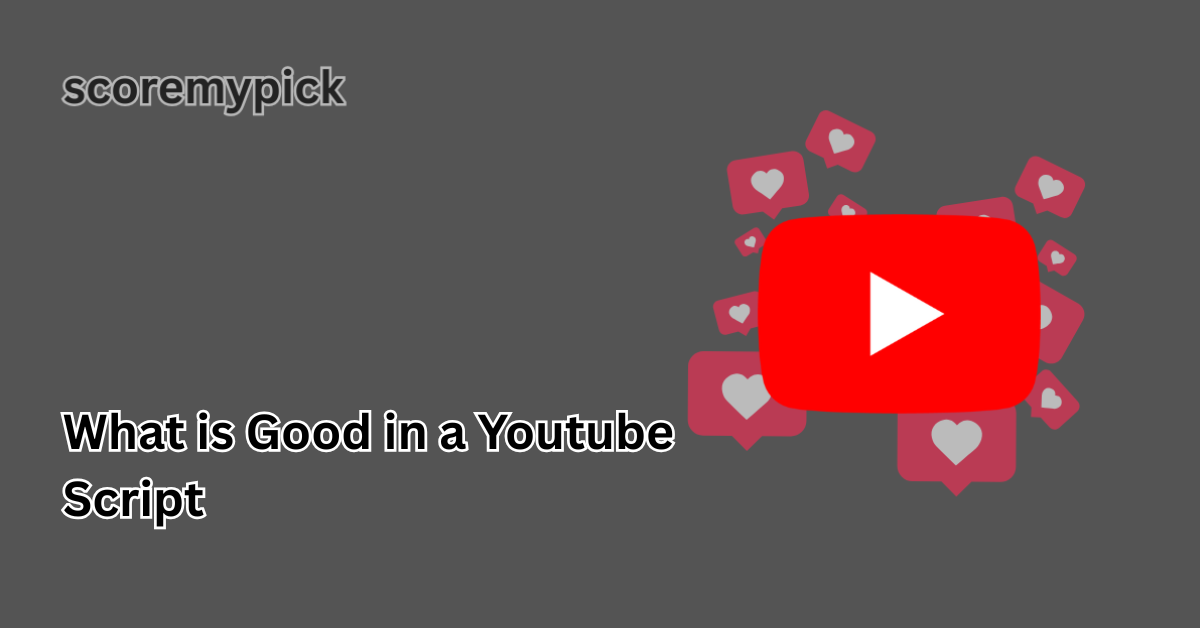YouTube is not only a video-sharing platform, but it is also a storytelling platform in 2025, where every second counts. The viewers are scrolling and skipping faster and are only remaining when they see something really worth their time.
This is why it is not a secret that a proper YouTube script can no longer be regarded as a nice-to-have thing, but rather the key to every successful video.
No matter what type of channel you are doing, tech review, lifestyle vlog, or educational content, it is the script that will decide how long people will watch, whether they will interact and how the algorithm will treat your content.
A good script is not only a piece of words; it is a planning guideline which defines the way your message is presented, the way your narrative is constructed and the way your audience responds.
We will deconstruct the specific factors that will make a YouTube script effective in 2025, supported by creator data, practices that work, and real performance strategies in this guide.
Hook, Promise, and Value: How to Captivate Viewers in the First 8–15 Seconds
The first few seconds of your video are your make-or-break moment. YouTube’s Creator Insider data from 2025 reveals that the average viewer decides whether to continue watching within 8 to 15 seconds. If your script doesn’t grab their attention right away, you lose them — and the algorithm notices.
A good hook should do three things:
- Grab attention immediately – Start with something unexpected. A bold claim, shocking fact, or direct question works best.
- Example: “What if your phone could last seven days on one charge?”
- Promise clear value – Let viewers know why they should care and what they’ll gain from watching.
- Connect emotionally – Curiosity, shock, excitement — emotion drives retention.
The creators maximise the use of pattern interrupts in the script, such as quick cuts, bold captions, or sound cues in 2025, to ensure that the first few seconds are effective. Always write your hook first so that the rest of your video can deliver on the promise of the hook.
Example Hook (Tech Review): “This smartwatch doesn’t just track your heart rate — it predicts it. And today, we’re testing if that claim actually works.”

The 3-Act Script Structure That Keeps Viewers Watching (Hook → Delivery → CTA)
Viral videos rarely happen by accident. The most successful creators follow a 3-act structure that gives their content direction and makes it easy for viewers to follow. This structure increases watch time, retention, and engagement — all crucial for ranking in 2025.
Act 1: The Hook (0–15 Seconds)
You’ve already captured their attention with a bold opening. This section sets expectations and teases what’s ahead.
Act 2: The Delivery (Main Content)
This is where most of your value lives. Instead of overloading viewers, break the information into short, story-driven segments. Use comparisons, examples, and punchy transitions to keep things flowing.
- Use transitional hooks like “Here’s where it gets interesting…” to hold attention.
- Data trend (2025): Structured storytelling boosts retention by up to 43%.
Act 3: The Call-to-Action (Final 20%)
A smart CTA doesn’t just say “subscribe.” It gives viewers a reason.
Example: “If this helped you, hit subscribe — because next week, I’m testing a gadget that could change how you work.”
With this 3-act script, you’re not just talking — you’re guiding the viewer through a journey.
Language, Tone & Pacing: Write for the Ear
One of the biggest scriptwriting mistakes creators make is writing like they’re crafting a blog post. YouTube is an audio-first platform, and your script should sound like a conversation, not a lecture.
Keep It Conversational
Use contractions (“you’re” instead of “you are”) and direct address (“you” instead of “people”). This makes the script sound more natural and personal.
Match Energy to Niche
Your tone should reflect your content. A tech review script should sound analytical and curious, while lifestyle content can sound warm and casual. Viewers connect with authentic energy.
Control Your Pacing
Rushing through lines is a common error. In fact, YouTube Analytics in 2025 shows that creators who balance high-energy delivery with well-placed pauses see a 28% boost in retention.
- Add breathing space between ideas.
- Pause before important points.
- Use emphasis to keep the energy dynamic.
Pro tip: Always read your script aloud. If it sounds robotic or too formal, rewrite it. A script should feel like a conversation between friends, not a speech.

Visual & Edit Directions: Script the Cuts, B-Roll, and Thumbnails That Increase CTR
A modern YouTube script goes beyond dialogue — it includes visual instructions. Top creators in 2025 plan B-roll, transitions, and thumbnail concepts directly in their scripts to ensure the final video flows smoothly and grabs attention.
Script Your Visual Flow
Write down where you want B-roll or graphics to appear:
- [Cut to product close-up]
- [Insert performance chart]
- [B-roll of unboxing]
This makes editing faster and ensures the visuals align perfectly with your voice.
Use Thumbnails and On-Screen Text Strategically
If your hook mentions “7 Days Battery Life,” note in your script to reinforce it visually with text and thumbnail ideas at that moment. CTR improves when your words, visuals, and thumbnail promise match.
Optimise for Attention
- Quick cuts every 8–12 seconds keep viewers engaged.
- Graphics break monotony.
- Text callouts are crucial for muted viewing (over 21% of viewers in 2025).
The result? A tight, dynamic video that feels intentional — not improvised.
What to Test (Retention, CTR, Watch Time) and How to Iterate
Great scripts aren’t written once — they’re refined through data. After a video goes live, top creators analyse performance to shape their next scripts. Here’s what matters most:
1. Retention Rate
- Benchmark (2025): 52–68% average retention for healthy channels.
- If viewers drop at specific time stamps, your script may be dragging or losing focus.
2. CTR (Click-Through Rate)
- Strong CTR: 5–12% for mid-level creators.
- Align your hook and thumbnail to increase clicks.
3. Watch Time & Average View Duration
- More watch time = better ranking.
- Strong delivery keeps viewers watching longer.
4. Iteration
Each video provides data. Review:
- Was the opening strong enough?
- Did the mid-section lag?
- Did your CTA sound natural?
Creators who build feedback loops into their writing process grow up to 3x faster than those who rely on instinct alone.
How to Make Every Line Count
The ultimate goal of a great script isn’t just to be watched — it’s to convert. Every line should serve a purpose, whether it’s informing, engaging, or guiding your viewer to take action.
Build Micro-Moments of Trust
Create small engagement points throughout your script:
- “Have you ever faced this problem?”
- “Stick with me, the best part’s coming.”
- These casual lines increase emotional connection and keep viewers from dropping off.
Natural CTAs Win
Avoid robotic CTAs. Tie them to value.
Example: “If this hack saved you time, hit subscribe — because the next video will make your workflow even smoother.”
Personalisation Wins in 2025
Viewers don’t want to feel like they’re watching an ad. They want to connect. Use personal stories, relatable language, and emotion-driven delivery to turn one-time viewers into loyal subscribers.
A Strong Script Is the Engine of Every Great YouTube Video
A strong script is behind each viral video. In the year 2025, gamers who succeed are not the ones who have flashy apparatuses but those who think quickly, deliver well, and get in touch with the soul.
A good script incorporates strategy and storytelling. It provides an orientation to the editors, entertains the audience, and helps your channel develop. You can be creating reviews of products, tutorials, or story content, but your script is the unseen engine behind all this.
The more your scripting, the more your brand.
FAQs
How to write a good script for YouTube?
Start with a strong hook, structure your content clearly (intro, delivery, CTA), and use conversational language to keep viewers engaged from start to finish.
What is the best format for a YouTube script?
The most effective format is Hook → Delivery → Call-to-Action, which captures attention early, delivers value smoothly, and ends with a clear next step.
How long should a 10-minute YouTube script be?
A 10-minute YouTube video typically needs 1,300 to 1,500 words, depending on your speaking speed and pauses for visuals or effects.
Can ChatGPT write a YouTube script?
Yes, ChatGPT can create structured, engaging YouTube scripts with hooks, storytelling elements, and CTAs tailored to your niche and video length.

